Hello, I’m Lokesh Sharma , a passionate travel vlogger on a mission to explore the beauty, culture, and diversity our world has to offer. Through my lens, I share real, raw, and inspiring travel experiences — from bustling city streets and tranquil beaches to offbeat trails and cultural wonders. Every journey is a story, and I bring those stories to life through engaging videos, detailed guides, and practical tips that help my audience plan their own adventures.
Last active 3 hours ago
Don't wanna be here? Send us removal request.
Text

Explore the breathtaking beauty of Northeast India with our Meghalaya Tour Packages from Pune. Known as the "Abode of Clouds," Meghalaya offers lush green landscapes, cascading waterfalls, mysterious caves, and charming villages that promise a refreshing escape from city life. Whether you're a nature enthusiast, an adventure lover, or someone seeking peace in the hills, Meghalaya has something for everyone.
0 notes
Text

Embark on a soul-refreshing journey to the Kingdom of Bhutan with our specially designed Bhutan Tour Package from Surat. Perfect for nature lovers, adventure seekers, and cultural enthusiasts, this package offers a seamless travel experience right from Surat. Explore the serene monasteries of Paro, the majestic dzongs of Thimphu, and the breathtaking valleys of Punakha – all while soaking in Bhutan’s unique blend of tradition, tranquility, and natural beauty.
0 notes
Text
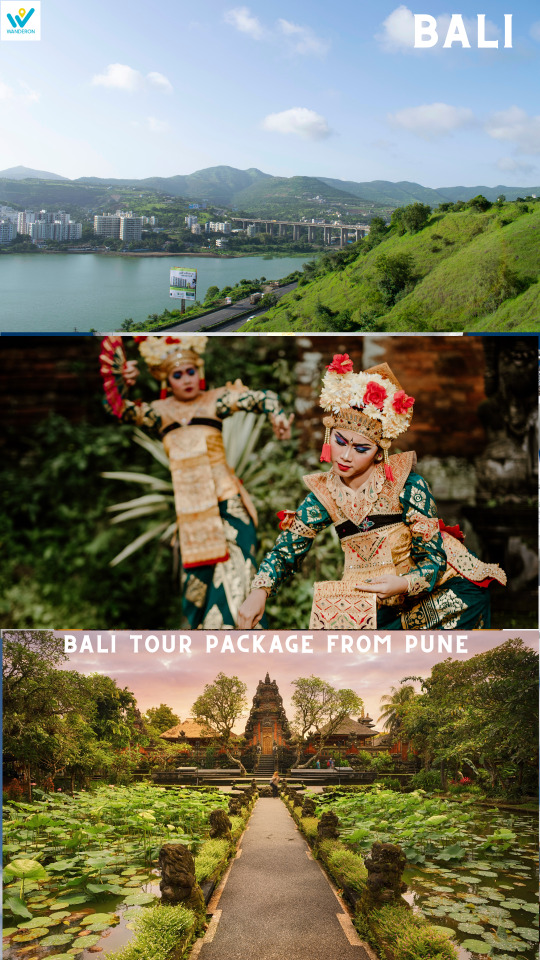
Escape to the tropical paradise of Bali with our specially curated Bali Tour Package from Pune. This all-inclusive package offers everything you need for a stress-free vacation – from flights and accommodations to guided tours and cultural experiences. Discover Bali’s enchanting temples, pristine beaches, vibrant nightlife, and lush green landscapes. Whether you're looking for a romantic getaway, a family vacation, or an adventure with friends, our Bali travel package has something for everyone. Fly from Pune and experience seamless travel planning, 24/7 support, and handpicked experiences that will make your trip unforgettable. Book now to enjoy the best offers, early-bird discounts, and personalized itineraries that match your interests and budget. Let WanderOn take care of the details while you create memories in one of Southeast Asia’s most beloved destinations.
0 notes
Text
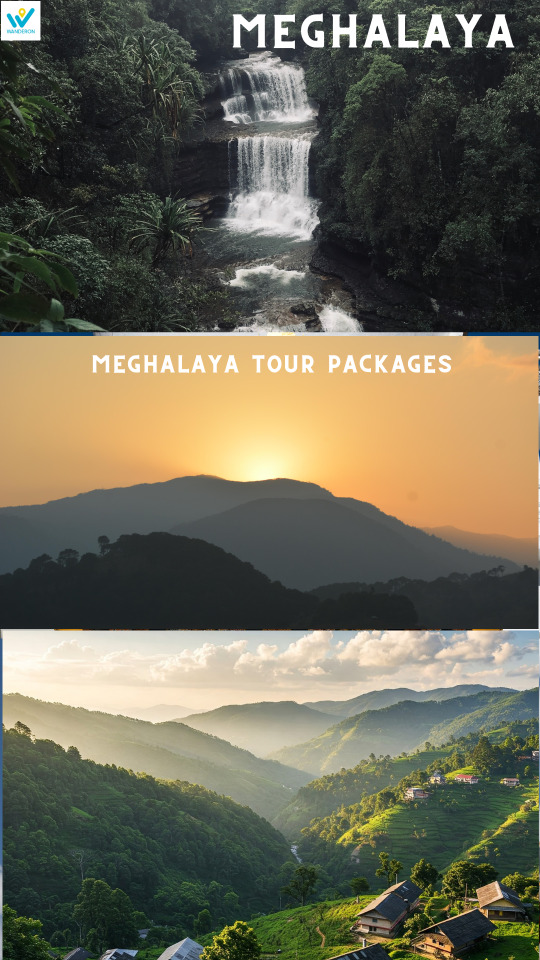
Discover the enchanting living root bridges of Cherrapunji, crystal-clear waters of Dawki, lush greenery of Mawlynnong—the cleanest village in Asia, and the captivating waterfalls dotting the state. Whether you're planning a solo adventure, a romantic getaway, or a family vacation, our Meghalaya Tour Packages from Ahmedabad offer a memorable journey through one of India’s most scenic states.
0 notes
Text
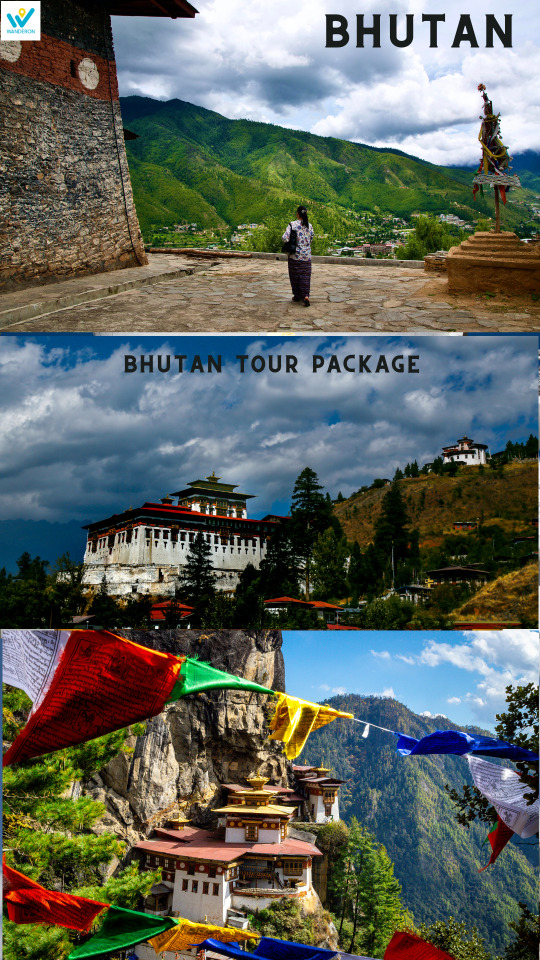
Uncover the breathtaking beauty of the Himalayas with our exclusive Bhutan tour packages from Chennai. Designed for travelers seeking peace, adventure, and cultural richness, our all-inclusive packages offer a seamless experience from the moment you leave Chennai.
0 notes
Text
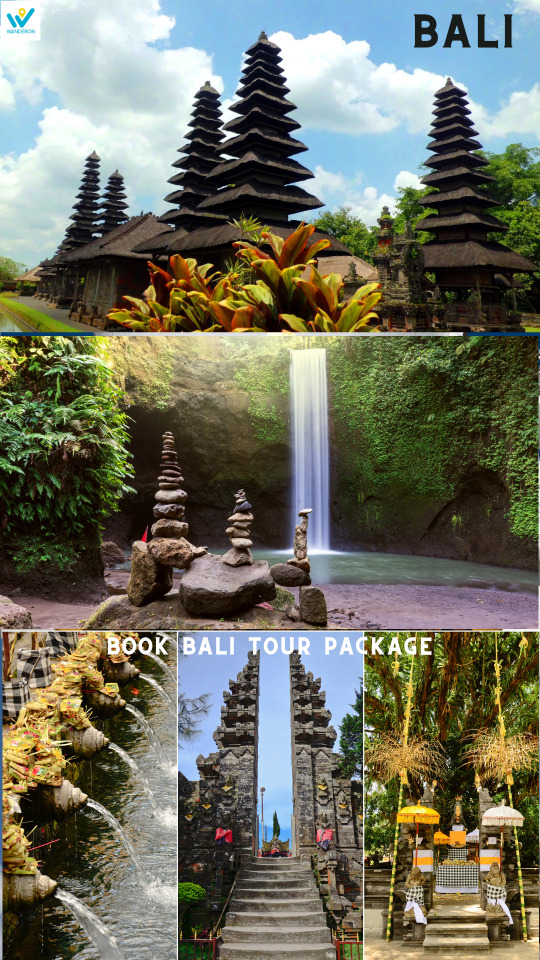
Looking to escape the daily routine and immerse yourself in tropical bliss? Discover the best Bali tour packages from Ahmedabad at unbeatable prices. Whether you’re a solo traveler, couple, or family, our customized packages include flights, stays, sightseeing, and transfers – all curated to give you a seamless travel experience. Explore Bali’s pristine beaches, lush rice terraces, iconic temples, and vibrant culture with guided tours and handpicked accommodations.
0 notes
Text
What is included in most Bhutan vacation packages?
Most Bhutan vacation packages are thoughtfully curated to offer travelers a seamless experience of the country’s stunning landscapes, cultural heritage, and spiritual sites. These packages often include hotel accommodations (typically 3-star to 5-star), daily meals, private or group guided tours, entrance fees to monuments and dzongs (fortresses), and a licensed Bhutanese tour guide.
In addition, all international travelers (except those from India, Bangladesh, and the Maldives) must book a package through a registered tour operator due to Bhutan’s tourism policy, which emphasizes “High Value, Low Impact” travel. Therefore, your package will also include the mandatory Sustainable Development Fee (SDF), which is currently USD $100 per day per tourist. Transportation within Bhutan—by private vehicle or sometimes domestic flights—is also usually included.
Some premium Bhutan vacation packages may offer specialized experiences like guided treks, meditation retreats in monasteries, or stays in luxury resorts such as Amankora or COMO Uma. Always confirm with the operator what’s included, especially airport transfers and visa processing, as these are commonly covered.
0 notes
Text
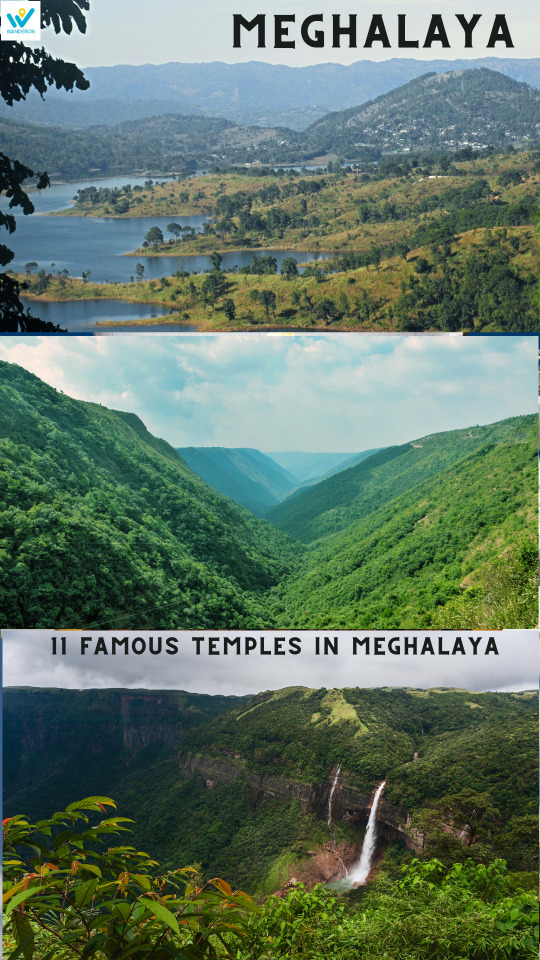
The list of 11 famous temples in Meghalaya includes popular spots like the Nartiang Durga Temple, Mahadev Khola Dham, and the Lum Sohpetbneng Temple—each rich in history and religious significance. These temples attract pilgrims and tourists alike who seek spiritual solace, stunning architecture, and panoramic views of Meghalaya’s lush surroundings.
0 notes
Text
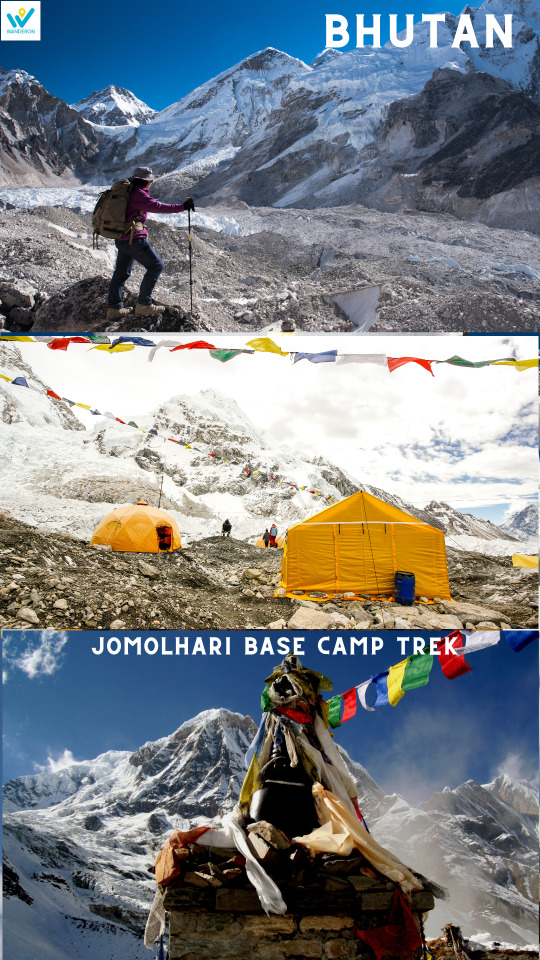
The Jomolhari Base Camp Trek is one of Bhutan’s most breathtaking and rewarding trekking experiences. Nestled in the Himalayas, this trek offers panoramic views of Mount Jomolhari, Bhutan’s sacred peak standing tall at 7,326 meters. Ideal for adventure seekers and nature lovers, the trek takes you through diverse landscapes—lush forests, alpine meadows, and traditional Bhutanese villages.
0 notes
Text
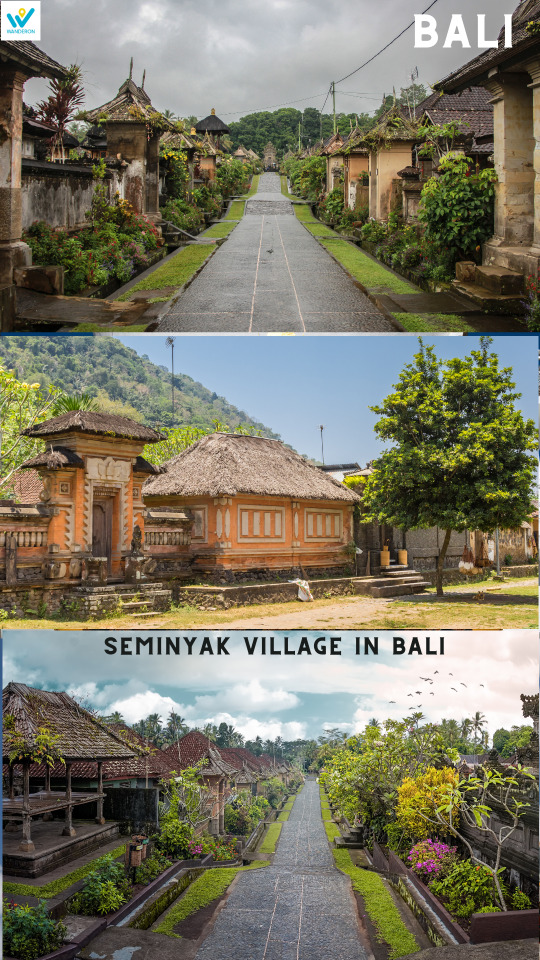
Seminyak Village in Bali stands out in 2025 as one of the island’s most stylish lifestyle destinations. Located in the heart of Seminyak, this modern shopping complex offers a blend of high-end fashion, local designer boutiques, artisanal crafts, wellness stores, and fine dining options—all under one roof. Whether you’re a shopaholic, a food lover, or a curious traveler, Seminyak Village has something for everyone. From internationally renowned brands to hidden gems of Balinese creativity, the mall provides a perfect mix of luxury and culture. It's not just a shopping destination but a place to relax, unwind, and experience the essence of Bali’s modern elegance. With spacious interiors, air-conditioned comfort, and a range of entertainment and beauty services, Seminyak Village caters to tourists and locals alike. In 2025, the mall also introduces new flagship stores and exclusive pop-up experiences, making it a must-visit spot during your Bali vacation.
0 notes
Text
A Scenic Escape to the Abode of Clouds: 3 Days in Magical Meghalaya

Are you dreaming of serene waterfalls, misty mountains, and enchanting caves? If yes, then Meghalaya should be your next destination! Tucked away in the northeastern part of India, this beautiful state is a nature lover’s paradise. Known as the "Abode of Clouds", Meghalaya is blessed with incredible natural beauty and rich tribal culture.
Whether you're coming from the southern part of India or elsewhere, there are various travel options. For instance, if you're looking to travel from Telangana, you can easily find Meghalaya Tour Packages from Hyderabad that include flights, stays, local travel, and meals – making your journey hassle-free and enjoyable.
Now, if you are a first-time visitor and wondering how to explore Meghalaya in just 3 days, don’t worry. We have prepared a perfect itinerary just for you.
Let’s dive into this unforgettable journey!
Why Choose Meghalaya for a Short Getaway?
Meghalaya is one of those rare places where time seems to slow down. The soothing weather, the cloud-kissed hills, and the soulful sounds of nature make it a perfect escape from your everyday routine.
Also, the availability of a Meghalaya tourism package that covers famous tourist attractions, transportation, and accommodation makes it easy for travelers of all kinds—solo, couples, families, and friends.
Now, let's get to the exciting part – the 3-day itinerary!
🌄 Day 1: Shillong – The Scotland of the East
Morning: Arrival at Guwahati & Drive to Shillong (100 km, 3 hours)
Most travelers arrive at Guwahati Airport or Railway Station. From there, Shillong, the capital city of Meghalaya, is just a beautiful 3-hour drive away.
Tip: Try to arrive early in the morning so you can enjoy sightseeing in Shillong the same day.
Afternoon: Shillong Sightseeing
Start with a warm lunch and gear up to explore:
Umiam Lake (Barapani) – A stunning man-made reservoir surrounded by forested hills.
Don Bosco Museum – An award-winning museum showcasing North-Eastern tribal culture.
Ward’s Lake – Ideal for a casual evening walk and boating.
Police Bazar – The main market for souvenirs, handicrafts, and delicious local food.
Evening: Check-in & Relax
Unwind at your hotel or try out some Khasi cuisine like Jadoh, Tungrymbai, and Dohneiiong.
🌧️ Day 2: Cherrapunji – The Rainiest Place on Earth
Morning: Drive to Cherrapunji (54 km, 2 hours)
Start early and enjoy the scenic journey through cloud-covered roads and rolling hills.
Must-Visit Attractions in Cherrapunji:
Nohkalikai Falls – India’s tallest plunge waterfall (340 meters).
Mawsmai Cave – A naturally formed limestone cave; easy to explore and well-lit.
Seven Sisters Falls – A panoramic waterfall especially beautiful during the monsoon.
Eco Park – Offers splendid views of the Bangladesh plains.
Thangkharang Park – Home to rare orchids and limestone formations.
Optional Adventure: Living Root Bridge Trek
If you’re fit and adventurous, try the 3 km trek to the Double Decker Living Root Bridge in Nongriat. It’s a once-in-a-lifetime experience!
Evening: Return to Shillong
Get back to Shillong by night and enjoy dinner at a cozy café like Café Shillong or Dylan's Café.
🌿 Day 3: Mawlynnong & Dawki – Asia’s Cleanest Village and Crystal Waters
Morning: Shillong to Mawlynnong (80 km, 2.5 hours)
Mawlynnong is known as Asia’s cleanest village. Walk through the spotless streets, see bamboo houses, and learn about the eco-conscious lifestyle of the villagers.
Balancing Rock
Sky Viewpoint – A bamboo tower offering views of the plains of Bangladesh.
Tree Houses – Traditional structures made entirely of bamboo and cane.
Afternoon: Dawki River (20 km from Mawlynnong)
Head next to Dawki for a boat ride on the Umngot River, famous for its crystal-clear water. The boats appear to float in mid-air—an Instagram dream!
Border visit: Visit the India-Bangladesh border (Tamabil crossing).
Try some fresh local fish fry at the riverside eateries.
Evening: Return to Shillong or Guwahati
Depending on your travel schedule, either stay the night in Shillong or drive straight back to Guwahati for your departure.
🏨 Where to Stay in Meghalaya
Budget: Hotel Pegasus Crown (Shillong), Orange Roots (Cherrapunji)
Mid-range: Ri Kynjai (Umiam), Polo Towers (Shillong)
Luxury: The Heritage Club – Tripura Castle (Shillong)
🥘 What to Eat in Meghalaya
Jadoh – Red rice cooked with meat and spices
Dohneiiong – Pork with sesame seeds
Pumaloi – Steamed rice cake
Tungrymbai – Fermented soybean curry
Try local beverages like Kyat (rice beer)
📅 Best Time to Visit Meghalaya
SeasonDurationHighlightsSummerMarch to JunePleasant weather, perfect for sightseeingMonsoonJuly to SeptemberLush greenery, powerful waterfallsWinterOctober to FebruaryClear skies, cozy climate, festivals
💡 Quick Travel Tips
Carry an umbrella or raincoat – weather is unpredictable.
Wear good trekking shoes – lots of natural trails and walks.
Respect local culture – Meghalaya has a matrilineal society.
Mobile network – Limited in remote areas, download offline maps.
Book early – Meghalaya tourism is gaining popularity fast.
🧳 How to Reach Meghalaya
By Air: Guwahati Airport is the nearest airport (125 km from Shillong).
By Rail: Guwahati Railway Station is the nearest railhead.
By Road: Cabs, buses, and rental cars are available from Guwahati.
📈 Facts & Figures About Meghalaya Tourism
Meghalaya welcomed over 1.5 million tourists in the year before the pandemic.
Cherrapunji and Mawsynram are listed in the Guinness Book for the highest rainfall.
Meghalaya is 70% forested and home to over 300 species of orchids.
Mawlynnong won the title of Asia’s Cleanest Village by Discovery India in 2003.
❓ FAQs About Traveling to Meghalaya
1. Is 3 days enough to explore Meghalaya?
Yes, 3 days are enough to cover the top destinations like Shillong, Cherrapunji, Dawki, and Mawlynnong. However, if you want a more relaxed trip, consider 5-7 days.
2. How much does a Meghalaya trip cost from Hyderabad?
A 3-day trip from Hyderabad including flights, stay, food, and sightseeing may cost between ₹15,000 to ₹25,000 depending on the package and time of booking.
3. Is it safe to travel to Meghalaya for solo travelers or couples?
Absolutely! Meghalaya is one of the safest states in India with friendly locals and good tourism infrastructure.
4. Do I need a permit to visit Meghalaya?
No, Indian tourists don’t need any permit. Foreign tourists may need to register online.
5. Which is the best Meghalaya tourism package for budget travelers?
You can find budget-friendly options on popular travel sites like WanderOn, Thrillophilia, or MakeMyTrip, with shared cabs and homestays.
✨ Final Thoughts
Meghalaya is more than just a destination. It's an experience filled with nature, culture, and serenity. Whether you are booking through a customized Meghalaya Tour Package from Hyderabad or planning it DIY, this 3-day itinerary will help you cover the best of the region.
From waterfalls that whisper tales of legends to villages that sparkle with cleanliness, Meghalaya offers memories that last forever.
0 notes
Text

Plan your perfect getaway to the Abode of Clouds with our affordable Meghalaya package from Bangalore. Explore the natural beauty of this North-Eastern gem, known for its lush green hills, cascading waterfalls, and serene villages. Whether you're a solo traveler, a couple, or a family, this budget-friendly tour includes comfortable stays, guided sightseeing, and smooth transportation—all starting from Bangalore.
0 notes
Text
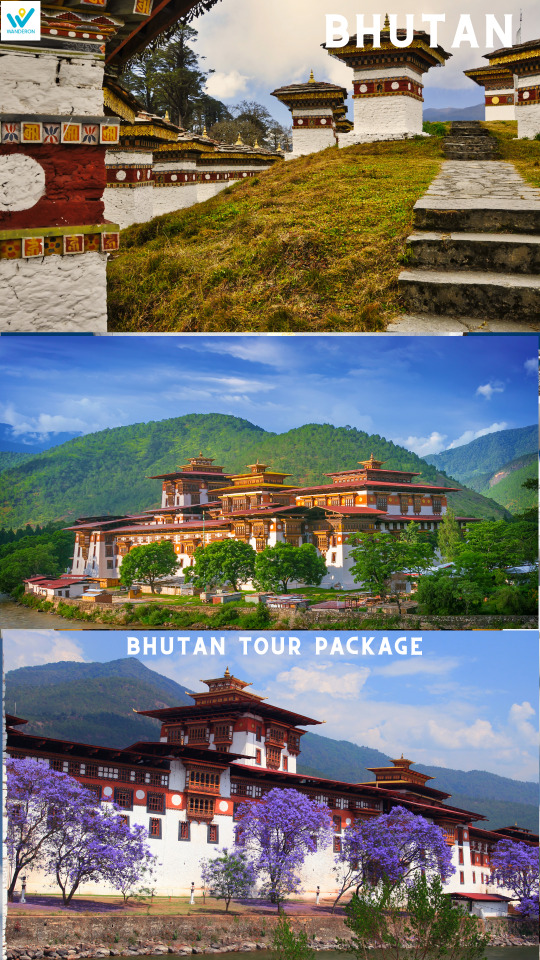
Embark on a magical journey to the Land of the Thunder Dragon with our exclusive Bhutan tour package from Bangalore. Perfect for nature lovers, spiritual seekers, and adventure enthusiasts, this package offers a seamless travel experience from start to finish. Explore iconic monasteries like Paro Taktsang, witness the charm of Thimphu and Punakha, and enjoy the serene landscapes of Bhutan with our thoughtfully planned itinerary.
0 notes
Text
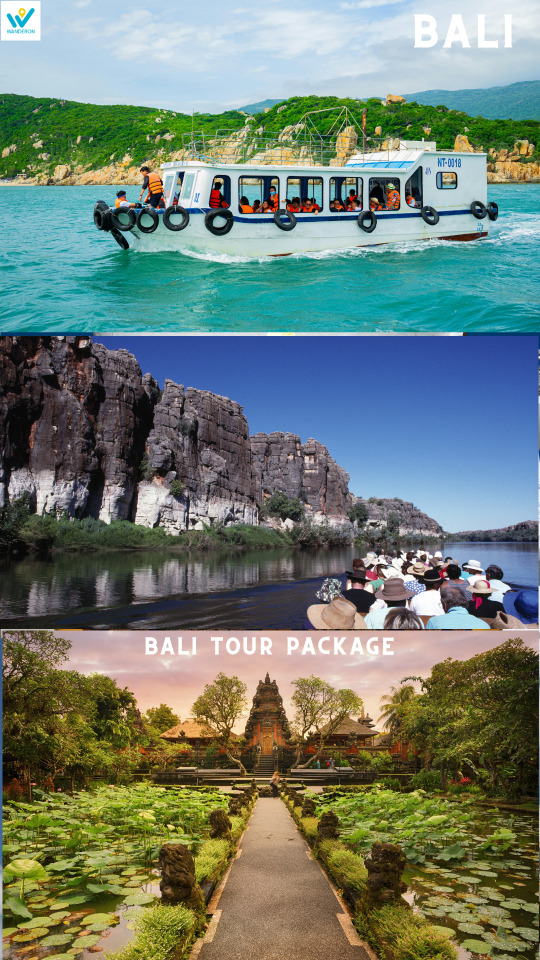
Embark on a tropical escape with WanderOn’s exclusive Bali tour packages from Bangalore. Designed for travelers seeking a perfect blend of culture, adventure, and relaxation, our Bali itineraries offer handpicked stays, thrilling activities, guided tours, and seamless travel arrangements. Whether you're dreaming of serene beaches, vibrant nightlife, or cultural exploration, we’ve got the perfect deal for you. With our expert-curated packages, enjoy Bali’s best without the stress of planning. Explore iconic spots like Uluwatu Temple, Ubud’s rice terraces, Bali Swing, and pristine beaches—all while enjoying hassle-free transfers and local experiences. Ideal for couples, families, and solo travelers alike, these packages provide unbeatable value and unforgettable memories. Book now and let WanderOn turn your Bali vacation into the adventure of a lifetime.
0 notes
Text
A Nature Lover’s Paradise: Exploring Offbeat Places in Meghalay
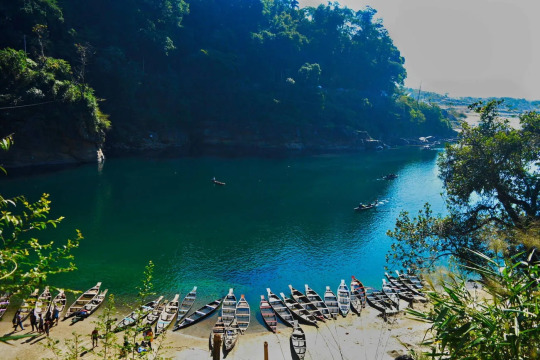
Meghalaya, often referred to as the "abode of clouds," is one of the most enchanting states in Northeast India. While most tourists flock to Shillong and Cherrapunji, there’s so much more to explore beyond the usual trails. If you're someone who enjoys exploring nature, culture, and solitude, this blog will guide you through offbeat places in Meghalaya that remain untouched by commercial tourism.
Before diving in, it's always a good idea to consider the many tour packages for Meghalaya available online. These packages often include both famous spots and hidden gems, making your trip smooth and memorable.
1. Mawlyngbna – Fossil Parks and Natural Water Slides
Mawlyngbna is a small village located in the East Khasi Hills district. It’s known for its fossil parks, adventure activities, and fascinating natural water slides. You can also see remnants of a prehistoric era with fossils embedded in rocks.
Highlights:
Adventure sports like zip-lining and kayaking
Visit to the Split Rock and Umkhakoi Reservoir
Local Khasi cuisine and warm hospitality
Tip: Pack water-resistant shoes, as the terrain can be slippery.
2. Nongriat – Home of the Double Decker Living Root Bridge
Yes, many people visit Cherrapunji, but few trek deep into the forest to reach Nongriat. This village is only accessible by a challenging trek of over 3000 steps, but the reward is surreal beauty and peace.
What to Do:
Marvel at the Double Decker Living Root Bridge
Take a dip in the natural pools of Rainbow Falls
Stay with locals in homestays for a true Khasi experience
Experiencing Meghalaya during rainy monsoons adds even more magic to this place. The foliage glistens, and the rivers and waterfalls are at their peak flow.
3. Shnongpdeng – The Clear Waters of Umngot River
Located near Dawki, Shnongpdeng is still relatively untouched. While Dawki is popular for its crystal-clear river, Shnongpdeng offers the same beauty with fewer crowds.
Activities to Enjoy:
Transparent kayaking on the Umngot River
Camping by the riverside
Cliff jumping and scuba diving
This spot is perfect for photographers and adventure lovers. Don’t forget your action camera!
4. Laitlum Canyon – The End of the Hills
Translating to “end of the hills,” Laitlum Canyon is just a short drive from Shillong and offers breathtaking panoramic views of valleys and rolling hills. It is especially stunning during early mornings and sunset hours.
What to See:
Misty cliffs and deep valleys
Traditional Khasi huts in Rasong village
Scenic trekking routes
The fog rolling through the hills here is every traveler’s dream scene.
5. Mawphanlur – The Land of Lakes
Mawphanlur is a beautiful meadow land with multiple natural lakes. It’s ideal for a quiet getaway and is best visited during the monsoon or just after, when the green pastures look straight out of a fairytale.
Why Visit Mawphanlur?
Great for stargazing and picnics
Horse riding through scenic meadows
Kayaking in the lakes
6. Khongthong – The Whistling Village
One of the most unique experiences in Meghalaya is in Khongthong, also known as the Whistling Village. Here, people communicate using tune-like whistles known as "Jingrwai Iawbei."
Don’t Miss:
Learning about whistled communication
Interacting with the warm and friendly locals
Attending cultural programs if you visit during festivals
This place offers a peek into the rich Khasi culture and traditions.
7. Mawsynram – The Wettest Place on Earth
While not completely offbeat, Mawsynram is often overlooked for Cherrapunji. Yet it deserves a visit for being the wettest place on Earth, especially during monsoon.
Key Attractions:
Mawjymbuin Cave with Shiva Lingam-shaped stalagmite
Local legends and folktales
Breathtaking waterfalls and streams
8. Dawki Village – Beyond the Border Town
Though Dawki is famous for its river, the town itself has several hidden places like small hilltop viewpoints, lesser-known waterfalls, and trails into the forest.
Explore More:
Sunset from the nearby hill viewpoints
Hidden waterfalls like Bophill Falls
Cross the Dawki-Tamabil border (for photo ops only)
9. Riwai Village – Natural Beauty and Sustainable Tourism
Next to Mawlynnong (Asia’s cleanest village), Riwai has its own charm. It is home to a single-decker root bridge and several clean nature trails.
What Makes Riwai Special:
Less crowded than Mawlynnong
Stunning views of Bangladesh borderlands
Eco-friendly tourism practices
10. Lum Sohpetbneng – The Navel of Heaven
A sacred hill for the Khasi people, Lum Sohpetbneng is associated with the mythological "tree of life" that connected heaven and earth. It’s more spiritual than scenic but provides a rare glimpse into Meghalaya’s mythology.
When to Visit:
During the annual pilgrimage in February
For peaceful solo hikes
To understand Khasi legends and spiritual beliefs
Packing Essentials for an Offbeat Meghalaya Trip
Even if you’re not visiting during heavy monsoon, Meghalaya’s weather is unpredictable. Here’s a quick checklist:
Waterproof backpack
Rain jacket or poncho
Comfortable trekking shoes
Quick-dry clothing
Insect repellent
Reusable water bottle
Power bank
Local cash (ATMs are rare in rural areas)
Identity proof
Best Time to Visit Meghalaya
Monsoon (June – September): Waterfalls are full and greenery is lush. Ideal for nature lovers.
Post-Monsoon (October – November): Clear skies and cool weather.
Winter (December – February): Great for scenic drives and cultural events.
Summer (March – May): Best for trekking and outdoor adventures.
How to Reach Meghalaya’s Offbeat Places
By Air: Nearest airport is in Shillong (Umroi) or Guwahati (better connectivity).
By Road: Hire a local taxi or take shared Sumos from Shillong.
Local Transport: Not frequent; renting a car or bike is recommended for deep travel.
Why Choose Tour Packages for Meghalaya
If you want a hassle-free journey, tour packages for Meghalaya are a smart choice. These often include transportation, guides, meals, and stays at unique locations. You can also customize packages based on your interests—be it culture, nature, or adventure.
FAQs: Offbeat Meghalaya Travel
Q1. Is Meghalaya safe for solo travelers? Yes, Meghalaya is generally safe, especially in rural areas. However, always inform someone of your whereabouts.
Q2. Do I need permits to visit Meghalaya? Indian tourists don’t need permits. Foreigners need to register at the local police station on arrival.
Q3. Is it okay to travel during the monsoon? Yes, but be prepared for roadblocks or delays. Traveling Meghalaya during rainy monsoons is beautiful, but roads can be slippery.
Q4. What are the best dishes to try? Try Jadoh (rice and meat), Dohneiiong (pork dish), and Tungrymbai (fermented soybean curry).
Q5. Can I stay in homestays? Yes! Many villages offer homestays, giving you a closer look at Khasi lifestyle.
Conclusion: Go Beyond the Usual in Meghalaya
Meghalaya is much more than just Shillong and Cherrapunji. From whistling villages to sacred hills, every corner has a story. So if you want to experience something different, explore the offbeat side of Meghalaya. Trust us—it’s worth every step.
Whether you plan your itinerary yourself or opt for tour packages for Meghalaya, the natural charm, cultural richness, and soul-soothing landscapes will leave you awe-struck.
0 notes
Text
Why Bhutan Should Be Your Next Foodie Destination: A Culinary Adventure Across Cultures
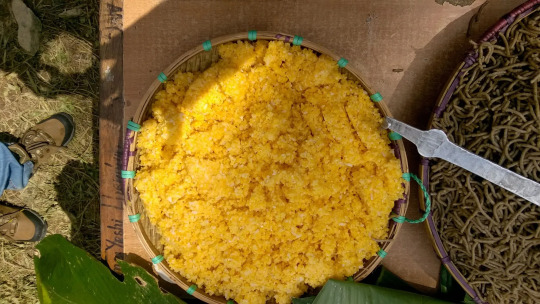
Planning your next international getaway? If you’re a travel enthusiast with a love for authentic cuisines, then Bhutan should be on top of your list. Known as the “Land of the Thunder Dragon,” Bhutan is more than just a peaceful Himalayan kingdom. It’s a land where every meal tells a story—rich in culture, flavor, and local identity. If you’ve been browsing Bhutan vacation packages, you might already know about the serene monasteries, stunning landscapes, and smiling locals. But what many travelers overlook is the incredible culinary journey Bhutan offers—especially when compared with its neighbors, India and Tibet.
From spicy stews to momos and butter tea, Bhutanese food is a delightful blend of flavors and traditions. While Bhutanese, Indian, and Tibetan cuisines share some common threads, each has a distinct personality. Let’s dive deep into this unique food triangle and explore why Bhutan’s cuisine is a hidden gem.
Bhutanese Cuisine: A Flavor You Won’t Forget
Bhutanese food is simple, hearty, and loaded with spice. The Bhutanese people love chili peppers—not as a garnish, but as the main ingredient! The national dish, Ema Datshi, is a fiery stew made of chilies and local cheese. It’s served with red rice, another Bhutanese staple.
Unlike Indian food, which is rich in oil and complex spice mixes, Bhutanese dishes are usually prepared with less oil and fewer spices but rely heavily on heat from chilies. And unlike Tibetan food, which is milder and often based on barley, yak, and dairy, Bhutanese food combines local vegetables, meats, and cheese for deeply comforting dishes.
If you’re planning to try out the local cuisine, make sure to explore the Best Restaurants In Bhutan. From farm-to-table experiences in Paro to traditional eateries in Thimphu, these places serve authentic dishes in cozy, cultural settings.
Key Differences Between Bhutanese, Indian, and Tibetan Cuisines
1. Ingredients
Bhutan: Red rice, chilies, yak cheese, pork, beef, and seasonal vegetables.
India: Wide range of pulses, rice, wheat, spices, ghee, meats, and vegetables.
Tibet: Barley, yak meat, butter, cheese, noodles, and simple soups.
2. Spice Level
Bhutan: Extremely spicy; chilies are the centerpiece.
India: Varies by region; generally spicy with layered spice blends.
Tibet: Mild; more focused on warming ingredients for the cold climate.
3. Popular Dishes
Bhutan: Ema Datshi, Phaksha Paa (pork with chilies), Jasha Maroo (spicy chicken), Red Rice.
India: Butter chicken, biryani, dosa, paneer tikka, samosas.
Tibet: Thukpa (noodle soup), Tsampa (barley flour), Momos, Butter tea.
Bhutan’s Must-Try Dishes
Here are some must-try Bhutanese dishes that will ignite your taste buds:
Ema Datshi
This is the most iconic Bhutanese dish. It combines local chili peppers and cheese in a stew that’s served with red rice. You’ll find it everywhere—from street stalls to luxury hotels.
Phaksha Paa
Pork cooked with dried chilies and radishes. A perfect mix of meat and spice, this dish represents the hearty nature of Bhutanese food.
Jasha Maroo
A spicy chicken stew with fresh herbs, tomatoes, and ginger. It’s both nourishing and delicious.
Suja (Butter Tea)
Made with tea leaves, yak butter, and salt. It's a drink that shocks most newcomers but is beloved by locals.
The Influence of Geography and Culture
Bhutan’s geography plays a big role in its food habits. Situated between India and Tibet, Bhutanese cuisine borrows elements from both sides but maintains its own flavor identity.
From Tibet, Bhutan adopted momos and butter tea.
From India, you’ll find lentil-based soups and some spice profiles.
However, Bhutanese people adapted these influences to their tastes—mainly spicier, more local, and more reliant on dairy and cheese.
Dining Culture in Bhutan
Food in Bhutan is more than fuel—it’s a spiritual and social experience.
Meals are often eaten with family and shared among friends.
People prefer eating on the floor in traditional homes, using minimal cutlery.
Offerings to the monks or local deities are common before major meals.
Bhutanese people also believe in eating fresh and seasonal food, which is why you’ll find different dishes across seasons.
A Taste of India in Bhutan
Indian food is quite popular in Bhutan due to the geographical closeness and the influx of Indian tourists. You’ll find Indian-inspired dishes and even Indian restaurants in cities like Thimphu and Paro.
That said, Indian food in Bhutan is often made milder to suit the local palate or spicier for Bhutanese tastes, depending on the restaurant.
How Tibetan Food Fits into Bhutan’s Culinary Story
Bhutan shares historical and spiritual ties with Tibet, and this has had a major influence on its food culture. Tibetan-style momos are very popular in Bhutan, often filled with vegetables, cheese, or meat.
Tibetan dishes are simpler and made for survival in harsh winters. You’ll find:
Thukpa: a noodle soup with vegetables or meat.
Yak meat dishes: common in higher altitudes.
Tsampa: a roasted barley flour that’s mixed with tea or butter.
Best Places to Eat in Bhutan
Looking to explore Bhutanese flavors firsthand? Here are some of the Best Restaurants In Bhutan:
1. Folk Heritage Museum Restaurant (Thimphu)
Perfect for traditional meals in a rustic setting.
2. Ambient Café (Thimphu)
Great for Bhutanese food with a modern twist. Their momos and chili cheese sandwiches are a hit.
3. Sonam Trophel Restaurant (Paro)
Famous for authentic Ema Datshi and a wide range of local dishes.
4. Olathang Hotel (Paro)
One of the oldest hotels in Bhutan, serving a luxurious Bhutanese buffet.
Planning Your Foodie Tour with Bhutan Vacation Packages
Many travel companies now offer Bhutan vacation packages that include food tours, cooking classes, and traditional meal experiences. Some packages even take you to local farms where you can see how Bhutanese ingredients are grown.
Look for packages that offer:
Homestays with cooking sessions
Visits to local markets
Traditional dining experiences with locals
Culinary treks to different regions of Bhutan
FAQs About Bhutanese Food and Travel
Q1. Is Bhutanese food vegetarian-friendly?
Yes, while meat is popular, many dishes like Ema Datshi, Kewa Datshi (potatoes and cheese), and Shamu Datshi (mushrooms and cheese) are vegetarian.
Q2. Is Bhutanese food very spicy?
Yes, Bhutanese dishes are generally very spicy. If you’re sensitive to spice, ask for a milder version.
Q3. Can I find Indian food in Bhutan?
Absolutely! Indian cuisine is widely available in Bhutan, especially in tourist areas.
Q4. Are Bhutanese dishes healthy?
Most dishes are prepared fresh and use local, organic ingredients. However, the high salt and spice levels might not suit everyone.
Q5. What drinks are popular in Bhutan?
Butter tea is common, along with locally brewed rice wine called Ara.
Final Thoughts: A Culinary Journey Like No Other
While Indian and Tibetan cuisines have their own strengths and global following, Bhutanese food holds a unique charm. It’s fiery, comforting, and rooted in culture. Whether you're a curious foodie or a cultural explorer, Bhutan offers an unforgettable dining experience.
So the next time you browse Bhutan vacation packages, make sure your itinerary includes a culinary tour. From the bold flavors of Ema Datshi to the soul-soothing Thukpa and the familiar spice of Indian curries—Bhutan is a paradise for every palate.
0 notes
Text
Ultimate Guide to Family Fun: Exploring Bali with Kids Like a Pro!
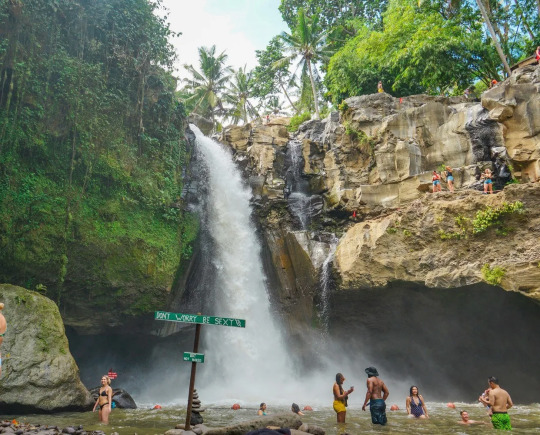
Planning a family vacation can be a delightful adventure — especially when your destination is as magical as Bali. Known for its pristine beaches, rich culture, and family-friendly resorts, Bali offers something for every age group. Whether you are seeking nature, culture, or just some poolside relaxation, this island paradise is a top choice for traveling with kids.
If you're looking for a Bali Indonesia package that offers kid-friendly activities, stress-free transportation, and memorable experiences, you're in luck. In this guide, we’ll cover everything you need to know to ensure your trip to Bali with kids is smooth, safe, and filled with unforgettable memories.
Let’s dive in!
Why Choose Bali for a Family Vacation?
Bali isn’t just for honeymooners or solo travelers. It’s a perfect destination for families with children, thanks to its welcoming locals, delicious food, and wide variety of kid-friendly attractions.
From Bali Tourist Places like the Sacred Monkey Forest to water parks and animal farms, your children will stay entertained throughout the trip. Plus, the cost of traveling in Bali is relatively affordable compared to many other tropical destinations.
Best Time to Visit Bali with Kids
Bali has a tropical climate year-round. However, the dry season (April to October) is ideal for family travel. During this time, the skies are mostly clear, and the beaches are perfect for sandcastle building and swimming.
Pro Tip:
Avoid the peak seasons (July–August and December holidays) if you prefer fewer crowds and better deals.
Top Tips for Traveling with Kids in Bali
Traveling with kids requires a bit more planning, but Bali makes it easy. Here are some helpful tips to make your journey smooth and enjoyable:
1. Choose Family-Friendly Accommodation
Look for resorts or villas with kid-friendly amenities such as:
Swimming pools with shallow areas
Kids’ clubs and babysitting services
Family suites or interconnected rooms
On-site restaurants with kid’s menus
Popular family hotels in Bali include:
Padma Resort Legian
Hard Rock Hotel Bali
Bali Dynasty Resort
2. Plan a Balanced Itinerary
Bali is packed with activities, but don’t overdo it. Kids need downtime too. Plan one or two major activities per day and leave room for naps, snacks, and pool time.
3. Carry Essentials at All Times
Make sure you pack a day bag with:
Sunscreen
Hats and sunglasses
Baby wipes and hand sanitizer
Reusable water bottles
Snacks
Change of clothes
Having these items handy will make exploring the island stress-free.
4. Use Child-Friendly Transportation
Taxis are available, but booking a private driver for the day is often more convenient and cost-effective. Drivers in Bali are generally helpful and familiar with family routes.
Look for drivers through platforms like Grab, or hire a private car via your hotel or travel agent.
5. Keep Meals Simple and Safe
Most restaurants offer a variety of dishes, including Western favorites like pizza and pasta. However, be cautious with street food.
Stick to places that are clean and popular with families. Carry some packaged snacks in case your child is a picky eater.
Top Kid-Friendly Attractions in Bali
Looking for exciting Bali Tourist Places to visit with children? Here are the best ones to add to your itinerary:
1. Bali Safari and Marine Park
This park offers a fun-filled day for kids. They can see over 100 species, including endangered animals like the Komodo dragon and Bali myna. There are also elephant rides, animal shows, and a water play zone.
2. Waterbom Bali
One of Asia’s best water parks, Waterbom offers rides for all ages. There are lazy rivers, splash zones, and even adrenaline-pumping slides for older kids.
3. Sacred Monkey Forest Sanctuary (Ubud)
Kids love seeing monkeys roam freely through this lush forest. Just make sure to keep an eye on your belongings — monkeys are known for their cheeky behavior!
4. Bali Treetop Adventure Park
Located in Bedugul, this park has zip lines, obstacle courses, and tree-top adventures tailored for different age groups.
5. Bali Butterfly Park
Located in Tabanan, this colorful park is perfect for little ones who love nature. They can watch butterflies fluttering around and even learn about metamorphosis.
Where to Eat with Kids in Bali
Here are some family-friendly restaurants where kids are welcome and well-fed:
Milk & Madu (Canggu & Ubud) – Offers a kid's corner with toys and books.
Made’s Warung – Great local cuisine with a kids’ menu.
Biku (Seminyak) – Known for its afternoon tea and peaceful ambiance.
Packing Tips for Traveling with Kids
Travel documents: Keep copies of passports, birth certificates, and travel insurance.
Clothing: Light cotton clothes, swimwear, hats.
Footwear: Comfortable sandals and closed shoes.
Health kit: Include mosquito repellent, basic medicines, and band-aids.
Safety Tips for Families in Bali
Always keep an eye on children, especially near water bodies and temples.
Avoid letting them touch animals or insects they’re unfamiliar with.
Use car seats if your kids are small — some car rental services offer them.
Stick to well-reviewed and licensed tour operators.
Cultural Etiquette in Bali
Teaching your children about Balinese culture will enrich their experience. Here are a few quick tips:
Dress modestly when visiting temples.
Always take off your shoes before entering someone’s home or a sacred space.
Never point your feet at people or religious objects.
Cost of Traveling to Bali with Kids
Here’s a rough breakdown for a Bali Indonesia package for a family of four (5–7 days): Expense CategoryEstimated Cost (INR)Flights (round trip)₹80,000–₹1,20,000Accommodation₹30,000–₹50,000Food₹10,000–₹15,000Transportation₹5,000–₹8,000Activities & Tickets₹8,000–₹12,000Miscellaneous₹5,000Total₹1,38,000–₹2,10,000
These are general estimates. Prices can vary based on season, hotel, and travel class.
FAQs – Traveling to Bali with Kids
Q1. Is Bali safe for kids?
Yes! Bali is generally very safe for families. Locals are friendly, and crime rates are low, especially in tourist areas.
Q2. Are there hospitals or pediatricians in Bali?
Absolutely. Bali has international-standard hospitals, especially in areas like Denpasar, Kuta, and Ubud.
Q3. What’s the best area to stay with kids?
Seminyak, Sanur, and Nusa Dua are among the most family-friendly areas with calm beaches and good resorts.
Q4. Do I need vaccinations before visiting Bali with my children?
Routine vaccines are a must. It's also wise to consult your doctor about Hepatitis A, Typhoid, and other travel-related immunizations.
Q5. Is Bali stroller-friendly?
Some parts of Bali can be challenging for strollers due to uneven pavements. It’s better to use a baby carrier when navigating crowded areas or temples.
Final Thoughts
Traveling to Bali with kids can be one of the most memorable family experiences. With the right mix of adventure, culture, and relaxation, your children will not only have fun but also learn about a new culture in a safe and welcoming environment.
So go ahead, pack those bags, book that Bali Indonesia package, and start planning your dream vacation. Let Bali’s charm and hospitality wrap around your family like sunshine on a warm beach day!
1 note
·
View note